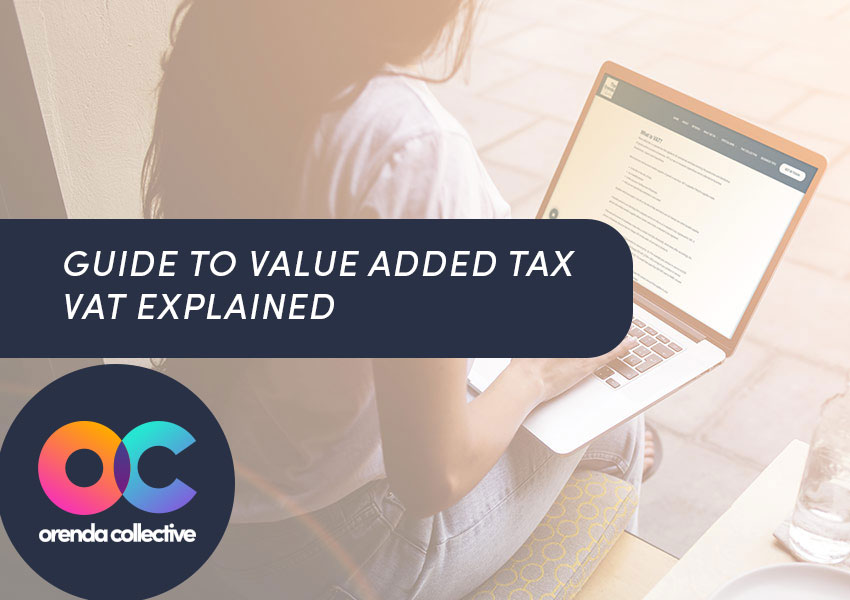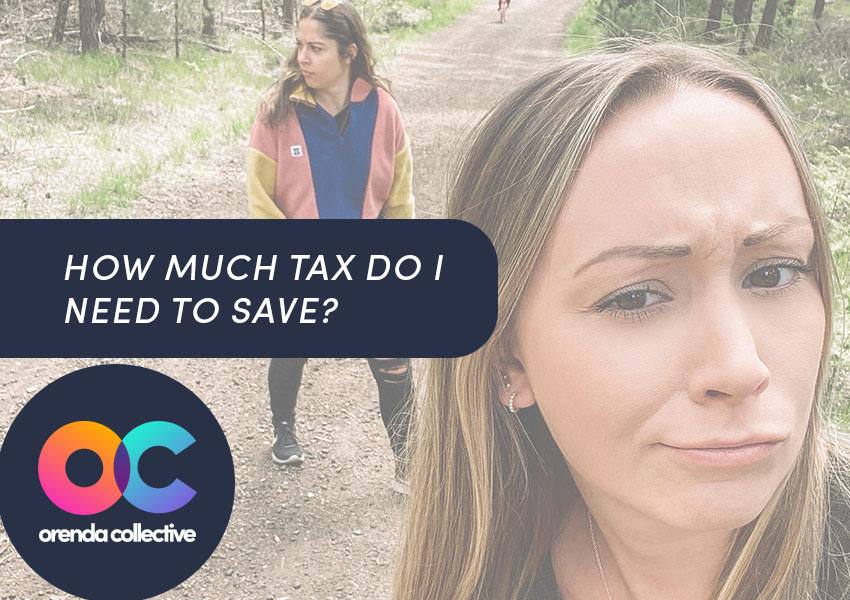
What is VAT?
Value added tax is a general tax that applies to all commercial activities involving the production and distribution of goods and/or provision of services. VAT is a tax on consumer expenditure and is collected on business transactions, imports and acquisitions.
Most business transactions involve supplies of goods or services. VAT is payable if they’re supplies made:
- in the UK or the Isle of Man
- by a taxable person
- in the course or furtherance of business
- that are not specifically exempted or zero-rated
Supplies which are made in the UK or the Isle of Man and which are not exempt are called taxable supplies.
A taxable person is an individual, firm, company and so on who is, or is required to be, registered for VAT. A person who makes taxable supplies above certain value limits is required to be registered.
If the annual turnover of a business is less than a certain limit (the threshold), which does differ accordingly, the person or business does not have to charge VAT on the sales of services or products.
VAT is charged as a percentage of your product or service price. So if for example your product or service is £100 and the applicable VAT rate is 20%, you would charge £20 VAT (£100 x 20%) on top of your product or service price. This makes the total cost to your customer £120. You would then pass that £20 VAT over to HMRC via your VAT returns and keep the £100 as your sale value.
It’s important to understand how VAT works and how to calculate the correct amount that applies to your business. If in doubt we recommend reaching out to your accountant.
When do I need to register for VAT?
You must register for VAT when your VAT taxable turnover is over £85,000 (known as the threshold), or if you know it will be. Your VAT taxable turnover is the total of everything sold that is not VAT exempt.
When is it compulsory for my business to VAT register?
You must register for VAT if:
- you expect your VAT taxable turnover to be more than £85,000 in the next 30-day period
- your business had a VAT taxable turnover of more than £85,000 over the last 12 months
You might also need to register in some other cases, depending on the kinds of goods or services you sell and where you sell them.
If you’ll exceed the VAT threshold in the next 30-day period
You must register if you realise that your total VAT taxable turnover is going to be more than £85,000 in the next 30-day period.
You have to register by the end of that 30-day period. Your effective date of registration is the date you realised, not the date your turnover went over the threshold.
Example
On 1 May, you realise that your VAT taxable turnover in the next 30-day period will take you over the threshold. You must register by 30 May. Your effective date of registration is 1 May.
If you exceeded the VAT threshold in the past 12 months
You must register if, by the end of any month, your total VAT taxable turnover for the last 12 months was over £85,000.
You must register if it goes over the current registration threshold in a rolling 12-month period. This is not a fixed period like the tax year or the calendar year – it could be any period, for example the start of June to the end of May.
You have to register within 30 days of the end of the month when you went over the threshold. Your effective date of registration is the first day of the second month after you go over the threshold.
Example
Between 10 July 2020 and 9 July 2021 your VAT taxable turnover was £100,000. That’s the first time it has gone over the VAT threshold. You must register by 30 August 2021. Your effective date of registration is 1 September 2021.
What if neither you or your business are based in the UK?
There’s no threshold if neither your nor your business is based in the UK. You must register as soon as you supply any goods and services to the UK.
What if I register late for VAT?
If you register late, you must pay what you owe from when you should have registered.
You may get a penalty depending on how much you owe and how late your registration is.
Can I register for VAT even if I am not over the threshold?
You can register voluntarily if your business turnover is below £85,000. You must pay HMRC any VAT you owe from the date they register you.
What counts towards my VAT taxable turnover?
VAT taxable turnover is the total value of everything you sell that is not exempt from VAT.
To check if you’ve gone over the threshold in any 12-month period, add together the total value of your UK sales that are not VAT exempt, including in addition:
- goods you hired or loaned to customers
- business goods used for personal reasons
- goods you bartered, part-exchanged or gave as gifts
- services you received from businesses in other countries that you had to ‘reverse charge’
- building work over £100,000 your business did for itself
Include any zero-rated items – only exclude VAT-exempt sales, and goods or services you supply outside of the UK.
Example:
| Month | Sales that are not exempt from VAT | Rolling 12 month total | Over £85,000 in VAT taxable supplies? |
| Start of trading: February |
5,000.00 | ||
| March | 5,500.00 | ||
| April | 5,700.00 | ||
| May | 5,900.00 | ||
| June | 6,000.00 | ||
| July | 4,500.00 | ||
| August | 8,000.00 | ||
| September | 7,500.00 | ||
| October | 7,000.00 | ||
| November | 7,800.00 | ||
| December | 5,600.00 | ||
| January | 8,200.00 | 76,700.00 | No |
| February | 9,000.00 | 80,700.00 | No |
| March | 9,500.00 | 84,700.00 | No |
| April | 7,600.00 | 86,600.00 | Yes – must register |
| May | 7,800.00 | 88,500.00 | Yes – stayed over |
| June | 8,200.00 | 90,700.00 | Yes – stayed over |
What happens after I VAT register?
Once registered, you’ll need to complete regular VAT returns, these are usually quarterly, however other periods do sometimes apply.
This is where you declare how much VAT you have charged (output VAT) and how much you have paid (input VAT).
If you’ve charged more VAT than you’ve paid, you’ll have to pay the difference to HMRC. Conversely, if the company has paid more than you charged, you can claim this back from HMRC.
Are there different VAT schemes available?
Yes there are different schemes available, some of which listed below:
- Retail schemes
- Cash accounting
- Second hand schemes
- Annual accounting scheme
- Flat-rate scheme
If you intend to use any of these schemes we recommend you discuss them with your accountant beforehand.
Can I reclaim VAT on my expenses?
VAT you have been charged on business expenses is called input VAT.
Input tax is the VAT you’re charged on your business purchases and expenses, including:
- goods and services supplied to you in the UK
- goods you import from outside the UK
- goods you acquire into Northern Ireland from a taxable person in an EU member state (see The single market (VAT Notice 725))
- goods you remove from a warehouse
- any services supplied in the UK which you receive from abroad
- overheads and research and development costs
What can be claimed as input tax on your VAT returns?
You can usually reclaim the VAT paid on goods and services purchased for use in your business.
Examples of items that may have VAT reclaimable (please note this list is not exhaustive):
- Materials or goods purchased to enable you to make your product of provide your service
- Computer of software costs
- Accountants fees
- Printing & Stationery
- Marketing costs
- Consulting costs
- Equipment costs
- Office costs
If a purchase is also for personal or private use, you can only reclaim the business proportion of the VAT.
Be careful to review the invoice/receipt to check whether the item actually had VAT on it before you reclaim input VAT. Also be sure to keep evidence of your input VAT.
What cannot be claimed as input tax?
You cannot reclaim VAT for:
- anything that’s only for private use
- goods and services your business uses to make VAT-exempt supplies
- business entertainment costs
- goods sold to you under one of the VAT second-hand margin schemes
- business assets that are transferred to you as a going concern
What about expenses / purchases incurred pre-registration for VAT?
There’s a time limit for backdating claims for VAT paid before registration. From your date of registration the time limit is:
- 4 years for goods you still have, or that were used to make other goods you still have
- 6 months for services
You can only reclaim VAT on purchases for the business now registered for VAT. They must relate to your ‘business purpose’. This means they must relate to VAT taxable goods or services that you supply.
You should reclaim them on your first VAT Return (add them to your Box 4 figure) and keep records including:
- invoices and receipts
- a description and purchase dates
- information about how they relate to your business now
What are the VAT rates?
- Standard rate of VAT: The standard rate applies to most goods and services, which is currently set at 20%. You should charge the standard VAT rate of 20% on all goods and services unless they are classified as reduced, zero-rated or exempt.
- Reduced rate of VAT: The reduced rate is set at 5% and only applies to some goods and services, for example children’s car seats, health, heating, mobility aids, energy and protective products and services. This rate depends on the type of item being sold as well as circumstances of it being sold.
- Zero rate of VAT: Zero rated is as the name implies, it’s items that have a 0% rate applied to them. Zero rated isn’t the same as exempt items. Zero rate counts as a taxable supply, but you do not add any VAT to your selling price. Zero rate items include health, building, publishing, books, newspaper, motorcycle helmets, most goods you export to outside the UK and children’s clothes and shoes. Even though there is no VAT applied on zero rate goods, it is still a rate of tax. Therefore, it must be recorded in all VAT accounts and reported in VAT returns.
Exempt supplies:
Some goods and services are exempt from VAT. If all the goods and services you sell are exempt, your business is exempt and you will not be able to register for VAT. This means you cannot reclaim any VAT on your business purchases or expenses.
If you are VAT-registered and incur VAT on any items that will be used to make exempt supplies, you are classed as partly exempt.
There are some goods and services on which VAT is not charged, including: insurance, finance and credit, education and training, fundraising events by charities, subscriptions to membership organisations, selling, leasing and letting of commercial land and buildings – this exemption can be waived
VAT rates may change and you must apply these changes to the rates from the date they do change.
What should I include on my VAT invoices?
Only VAT-registered businesses can issue VAT invoices and you must:
- issue and keep valid invoices – these can be paper or electronic
- keep copies of all the sales invoices you issue even if you cancel them or produce one by mistake
- keep all purchase invoices for items you buy
Valid invoices
You’ll use a full VAT invoice for most transactions. You can use:
- a modified invoice for retail supplies over £250
- a simplified invoice for retail supplies under £250 – and for other supplies from 1 January 2013
You cannot reclaim VAT using an invalid invoice, pro-forma invoice, statement or delivery note.
Include the following on your invoice, depending on which type you use:
| Invoice information | Full invoice | Simplified invoice | Modified invoice |
| Unique invoice number that follows on from the last invoice | Yes | Yes | Yes |
| Your business name and address | Yes | Yes | Yes |
| Your VAT number | Yes | Yes | Yes |
| Date | Yes | No | Yes |
| The tax point (or ‘time of supply’) if this is different from the invoice date | Yes | Yes | Yes |
| Customer’s name or trading name, and address | Yes | No | Yes |
| Description of the goods or services | Yes | Yes | Yes |
| Total amount excluding VAT | Yes | No | Yes |
| Total amount of VAT | Yes | No | Yes |
| Price per item, excluding VAT | Yes | No | Yes |
| Quantity of each type of item | Yes | No | Yes |
| Rate of any discount per item | Yes | No | Yes |
| Rate of VAT charged per item – if an item is exempt or zero-rated make clear no VAT on these items | Yes | Yes (1) | Yes |
| Total amount including VAT | No | Yes (1) | Yes |
(1) If items are charged at different VAT rates, then show this for each.
Are there any other areas of VAT I should be mindful of?
Yes, VAT is a complex tax and there are lots of things you should be mindful of, some of which we have listed below:
- If you trade with customers in the EU you should review the VAT and import/export changes as a result of Brexit
- There are specific rules for trading with customers in Ireland that you should check and ensure compliance with
- The ‘place of supply’ rules are intricate and complex and we recommend you ensure you are clear on the place of supply based on legislation
- Record keeping is key, you must maintain specific records in support of the information included on your VAT return
- Different products and services have different VAT rates
- Making Tax Digital for VAT requires VAT-registered businesses, with taxable turnover above the VAT registration threshold, to keep records digitally and file their VAT Returns using software
- Special rules that apply to digital sales
When should I reach out to an accountant?
Regardless of what type of business you have, VAT is very important and not something you can ignore.
Understanding the VAT rate that applies to your business and how you charge it correctly will help you to avoid any penalties, reclaim any VAT owed and to ensure your business is running successfully and efficiently.
Having the right accountant who understands your business, is on hand to answer questions and provide support will help you to stay organised and compliant with all of the VAT rules and regulations.
Failure to comply with the rules or registering late can be very costly and we highly recommend you reach out to an accountant to understand your obligations and get advice.
If you would like support please do get in contact with The Orenda Collective.




